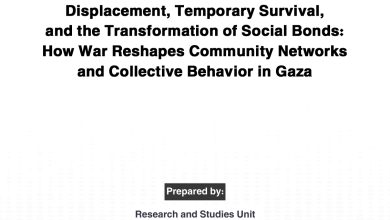Policy Paper: The Exacerbating Electricity Crisis in Gaza and Urgency of Finding Strategic Solutions

Background and Rationale:
For many years now, Gaza Strip has been suffering from a chronic crisis in the electricity sector. This crisis is connected with a variety of crises which its intensity varies according to the changing circumstances and contexts that affect them. There are multiple sources of electric energy that provide Gaza with electricity. The need of the Gaza Strip’s electricity is currently between 350 and 450 MW which is expected to rise up to 600 MW in case of lifting the Israeli siege. There are three primary sources: first, the Israeli electricity company, which supplies 120 MW via ten electric lines. Second, the power station in Gaza and its theoretical capacity is to produce 140 MW though its actual average of production is only 80 MW due to its dependency on the amount of fuel available for the production of electricity. Third, the Egyptian electricity grid that supplies Gaza with around 27 MW through two main electric lines.
This means that the total electricity quantity available from the three sources is about 230 MW with a seasonal variation of the electricity needs of Gaza that reach its peak to 440 MW in summer and winter. Accordingly, this shows a large deficit up to more than 150 MW, representing 35 % to 40% of the total needs of electricity, which is largely influenced by the change in the supply and demand causing a power failure.




